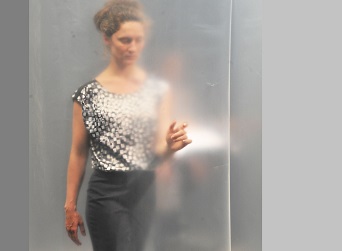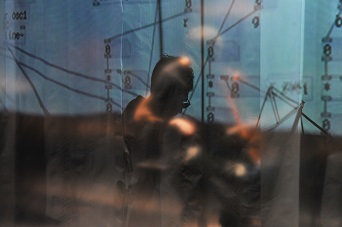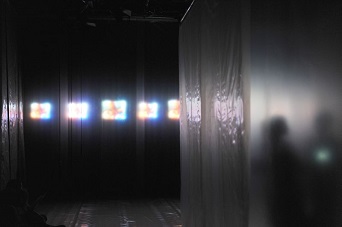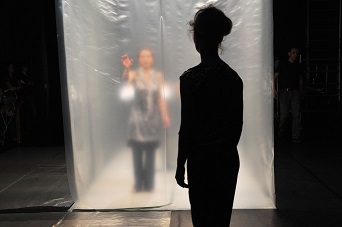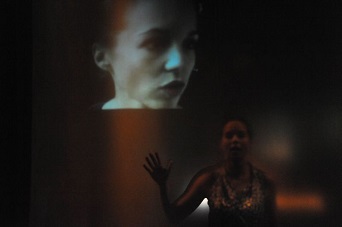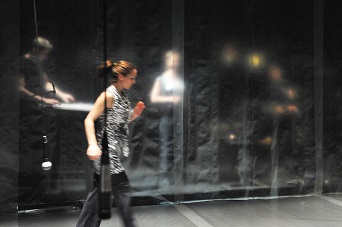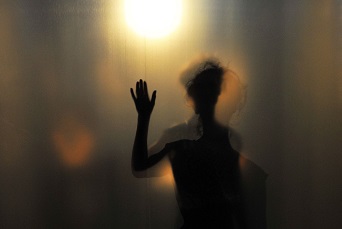2012 May 13th
Munich Biennale 2012:
Project Scholarship Young Art/New Media
in the field of music of the City of Munich 2011
world premiere: NEDA - The Call / The Voice
Persian Trilogy Part 2
COMPOSITION, LIVE ELECTRONICS, CONCEPT: Alexander Strauch
CONCEPT, TEXT: Martina Veh
Premiere (world premiere) on Sunday, 13 May 20.30 hrs,
further performances: Mon 14 and Tue 15 May, 6.30 p.m. and 8.30 p.m.
i-camp / neues theatre münchen, Entenbachstraße 37, 81541 Munich, Germany
MUSICAL DIRECTION: Alexander Strauch
STAGE DIRECTION: Martina Veh
Participants:
Alexandra Steiner (soprano)
Julla von Landsberg (soprano)
Mathis Mayr (cellos)
Martin Mallaun (zithers)
LIGHT/ SPACE: Benedikt Zehm
SPACE: Martina Segna
SOUND: Peer Quednau
ASSISTANT (direction & text): Marlene Besl/Gwendolin Lehnerer
PR work: Simone Lutz
Photos: Regine Heiland
about the piece:
NEDA - the call, the voice shows the ambivalence of new communication technologies through the fate of two young women from Iran. One was shot during the "Green Revolution" in 2009 and became an icon of the uprising. The other was forced to give up her life and flee by confusing her picture on Facebook with that of the woman who was killed. If you convert the colour values of their pictures into sine tones, they sound strikingly similar.
How do the photos of the Biennale visitors sound in comparison? With their picture and date of birth taken before the performance or a freely invented profile, they can become just as much a part of the composition as the two Iranian women. East and West, as differently as they use social networks - there they favoured the current rebellions, here they publicly display private things - together they reveal their pictures and data.
This composed installation leads into the abysses of modern Iran as well as our technological era, both of which often seem unfathomable like an ancient oracle. In Iran, this tradition is still cultivated today with Hafis' poetry, one of the few common denominators of all Persians as well as Goethe's inspiration for his West-Eastern Divan: wise ladies use it to predict the future. Hafis' poetry is fed into NEDA like the photos into the electronics - a new kind of music-theatrical synthesis is created from images and words.
Interview with composer Alexander Strauch (AS) and director Martina Veh (MV):
How did you get the idea to do a project on the topics of Iran and the Internet?
AS: In 2009, I was moved by the images of the protests after the rigged presidential elections: A student named Neda was shot, another Neda was mistaken for her on the internet and info media, which continues to this day; so she had to flee. At that time I was reading the old Persian poet Hafez with his ambivalent relationship to strong Persian women. When, while playing music electronically, the pictures of the Nedas circulating on the internet also sounded the same, it was clear to me that I had to make a music theatre out of it.
What do you see as the positive power of the internet?
MV: The development of the internet is comparable to the development of printing and literacy. Knowledge and information become accessible to a wider amount of people. This caused a certain malaise then as it does now. People might start asking questions of themselves and the system.
Where the powerlessness?
MV: The internet cannot have powerlessness because it is only a tool. The question is rather: How is the internet used in different societies? It is the human being himself who creates and feels powerlessness when he perceives the world. This is also what happens in the modern tragedy that we tell with our music theatre.
How do you make images sound?
AS: In principle, colour values become frequencies of sine tones. There will be sounding images of the audience and the nedas. Their sound triggers the sound of the narration. The singers trace the mad story, which in turn leads to Martina Veh's scenic images. Music as the interface of seeing perception: one could say image-to-sound-to-image as a mixture of theatre, concert and installation.
Wie hört sich ein Gesicht an?
MV: Kommen Sie zu unserer Vorstellung, dann wird ihre Frage beantwortet. Die Musik von Alexander Strauch ist eine höchst szenische - daher eine reiche impulsgebende Fundgrube für das Theater. In erster Linie erzählen wir die Geschichte einer Verwechslung: Stellen Sie sich vor, sie sehen in den Nachrichten ihr eigenes Bild als das einer Gestorbenen.

